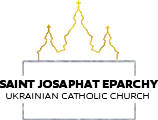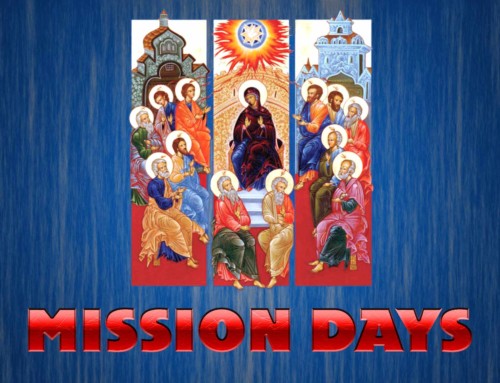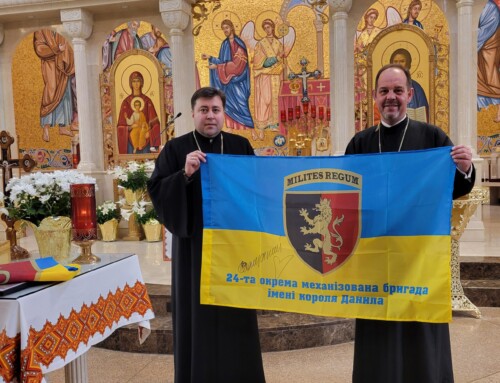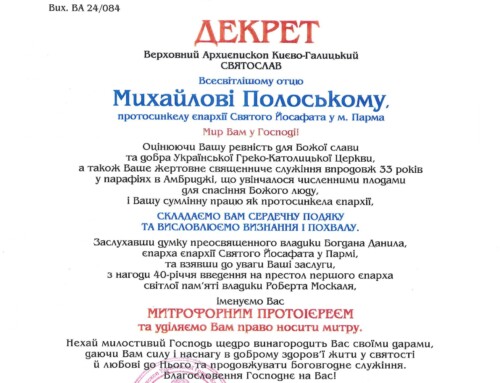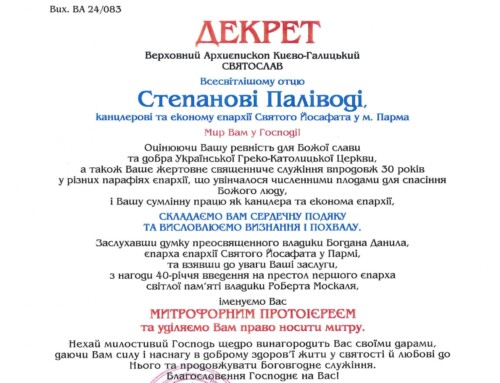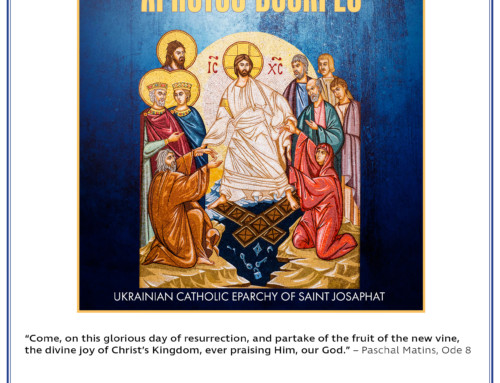LET’S SUPPORT THE CREATION OF THE NATIONAL MUSEUM OF THE HOLODOMOR-GENOCIDE IN KYIV
The month of November for Ukrainians, Ukrainians in the heart and people of good will is a time of honoring the victims of the Holodomor, the terrible and planned by the Stalinist-Soviet regime famine of Ukrainians in Central, Eastern and Southern Ukraine and Kuban in 1932-1933. The forced and prolonged famine of millions of Ukrainians has led to the deaths of at least 10.5 million people according to latest research data! It was a deliberate policy in response to the resistance of freedom-loving peasants against the collectivization introduced in 1928, when private land, livestock and agricultural implements were taken to form collective farms and forced to work on collective farms paying with grain not enough to feed their families. About 4,000 mass demonstrations of peasants against collectivization in the early 1930s were documented. To break the resistance of the peasants, an excessive measure of grain procurement was introduced, which forced the transfer of all harvested grain to the state, which sold it for next to nothing abroad. Peasants began to leave the collective farms en masse, taking back their property. In order to preserve the collective farms and property in the hands of the state, the regime passed a repressive decree on August 7, 1932, popularly known as the “Law of Five Ears (spikes) of Grain.” All collective farm property was equated to state property, and severe penalties were imposed for its theft. Under this law, the state punished hungry peasants for harvesting leftovers in a field by imprisonment for 10 years with confiscation of property or execution. Special groups of people were organized to search the population to seize grain by force. Such searches were accompanied by terror, physical and moral abuse.
The decision of the Politburo of the Central Committee of the Communist Party of Ukraine was made under pressure from Molotov dated November 18, 1932 on the right of the state to take from peasants not only grain but also other food and property that could be sold or exchanged for food was still incredibly cruel. Also, a specific repressive regime was introduced – “black boards”. It meant a physical food blockade of collective farms, villages, districts: total seizure of food, ban on trade and transportation of goods, ban on the departure of peasants and the encirclement of the village by military units, GPU, police. In 1932–1933, the “blackboard” regime operated in 180 districts of the Ukrainian SSR (25% of districts). Such a repressive regime was applied only in Ukraine and the Kuban – in places of compact residence of Ukrainians.
The worst time of the Holodomor was in June 1933. Every day 28,000 people died martyrdom, 1,168 people died every hour, and 20 died every minute.
Even today we do not know exactly how many people died during the Holodomor. Most historians and scholars claim that more than 7 million died in Ukraine and 3 million Ukrainians in the Kuban, Central Chernozem region, the Volga region and Kazakhstan. Apart from the number, it is difficult to establish the names of those killed in the Holodomor, as it was forbidden to record the actual number of deaths. Today, secret lists of some village councils with a list of those who died in 1932–1933 have been revealed. These lists are twice the official data. It is clear that such cases were not uncommon. There was a ban on recording the cause of death as “starvation”, so the death certificates indicated “from typhus”, “exhaustion”, “from old age”. In 1934, all the books of the Registry Office on the registration of deaths were transferred to a special department of the Central Prosecution office. Ukrainians died out in families, villages, and the dead were not always counted. The unreported mortality rate is unknown, but it is clear that millions have died.
To honor the victims of the Holodomor, to collect and study the history of the Holodomor, the Ukrainian government approved the establishment of a Memorial to the Victims of the Holodomor. In 2010, a memorial part was opened, recently renamed as the National Museum of the Holodomor-Genocide, on the banks of the Dnipro River in Kyiv. This first part of the Memorial consists of parts: two sculptures of angels, which are a symbolic entrance to the museum, the square “Mill of Fate”, around which are artistic sculptures of millstones, and in the center of the square – a sculpture of a girl called “Bitter Childhood”. The “Candle of Memory” is surrounded by a complex of artistic compositions (storks, iron crosses, stone blocks, slabs with carved years of crime against the Ukrainian people). The Memorial Hall is the central part of the Memorial, which currently serves as a museum, and the Black Boards Alley are granite slabs listing the settlements to which the special Holodomor extermination regime was applied. Right now work is underway to build the second, museum, part of the Memorial. The cost of the project is 125 million US dollars, of which 65 million is provided by the Ukrainian government for the construction of the museum, and 60 million must be raised to create and equip the museum materials, conduct research and establish a fund for its further existence and development. This is exactly what the International Charitable Foundation of the Holodomor Museum, which was created by three organizations – the All-Ukrainian Human Rights Organization “Vasyl Stus memorial”, the Public Committee for Commemoration of the Victims of the Holodomor – Genocide of 1932-1933, and the World Congress of Ukrainians. The Museum Fund has a supervisory board consisting of:
· Ivan Vasyunyk, Chairman of the Supervisory Board
· His Beatitude Sviatoslav (Shevchuk), Head and Father of the Ukrainian Greek Catholic Church
· His Beatitude Metropolitan Epiphanius, Primate of the Orthodox Church in Ukraine
· Victor Yushchenko, President of Ukraine 2005-2010
· Tony Abbott, Prime Minister of Australia 2013-2015
· Stephen Harper, Prime Minister of Canada 2006-2015
· Filya Zhebrovska, Chairman of the Supervisory Board of JSC “Farmak”
· Oksana Zabuzhko, writer, Shevchenko Prize winner, daughter and granddaughter of Holodomor witnesses
· Andriy Kozytsky, historian, associate professor of Ivan Franko National University of Lviv
· Olena Kosharna, Founder and CEO of Horizon Capital, Chairman of the Board of Directors of the American Chamber of Commerce (ACC) in Ukraine, Vice President of the World Congress of Ukrainians
· Natalia Yaresko, Minister of Finance of Ukraine 2014-2016
· Stepan Kubiv, Chairman of the Vasyl Stus Memorial NGO, First Deputy Prime Minister of Ukraine and Minister of Economic Development and Trade of Ukraine 2016-2019
· Bohdan Onyschuk, Chairman of the Board of the Canadian-Ukrainian Foundation
· Stefan Romaniv, First Deputy President of the World Congress of Ukrainians.
The Supervisory Board is responsible for the collection and responsible, efficient and transparent use of funds for the development of the museum.
His Beatitude Sviatoslav, Head and Father of the Ukrainian Greek Catholic Church, appealed in a special letter to Ukrainians, Ukrainians in the heart and all people of good will to join the fundraiser for the creation of the museum. All donors will be duly recorded and honored. We will periodically report on the progress of the collection and publish lists of donors. You can contribute as follows:
· Write a check to the Ukrainian Catholic Archdiocese of Philadelphia, mark the Holodomor Museum in Kyiv, and mail it to Archbishop’s Chancery, 810 North Franklin Street, Philadelphia, PA 19123. A letter of thanks will be sent to you.
· Visit the Philadelphia Archdiocese’s FACEBOOK page, www.facebook.com/archeparchyphilly, find a fundraising report for the Holodomor Museum in Kyiv and can make a donation by credit or debit card. FACEBOOK will send you an email notification of receipt of funds.
· Visit the Philadelphia Archdiocese’s website, www.ukrarcheparchy.us, click on Donate via Paypal, then click on “Donate for Creation of the Holodomor Museum in Kyiv” and you can make your donation by credit or debit card. A letter of receipt will be sent upon request.
· You can make donations immediately on the Holodomor Museum’s website on the Internet platform “Grains of Truth” at https://www.zernapravdy.org/uk/campaigns/sprout-the-grains-of-truth-together-with-his-beatitude-sviatoslav/. Unfortunately, a letter of charitable donation will not be provided.
Join the good and very necessary cause – the creation of a wonderful and much needed National Museum of the Holodomor-genocide, which will truthfully and widely cover the horrors of the Holodomor, honor the memory of all the dead and we will finally know their names, and it will remind of the atrocities of the Stalinist-Soviet regime in Ukraine . This must be done for our future generations, the future of Ukraine and to prevent such horror somewhere in the world.
With prayer, Yours in Christ,
Bishop Andriy (Rabiy)
Auxiliary Bishop of Philadelphia
